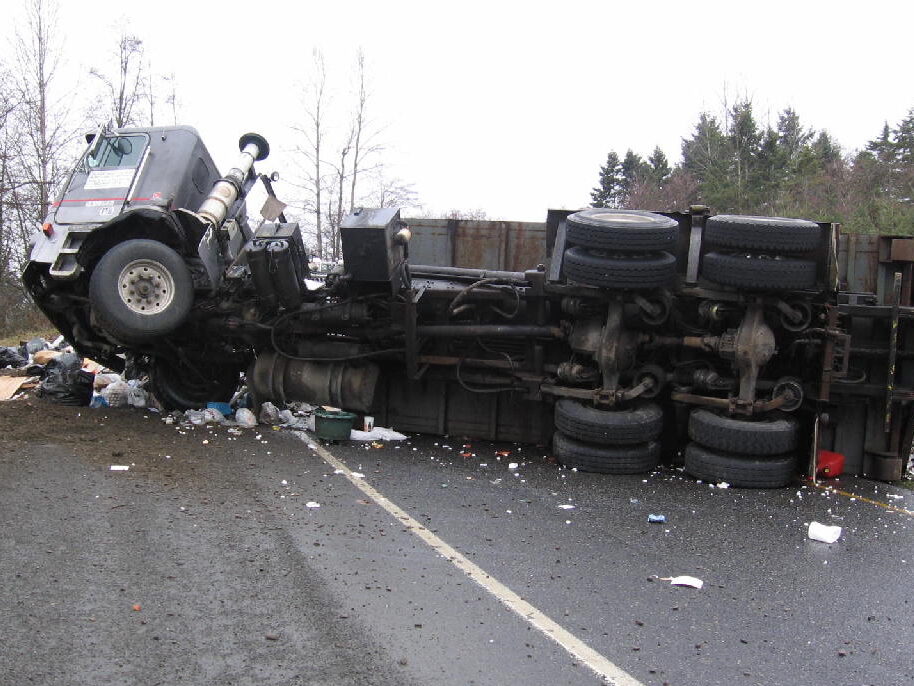Truck accidents are an unfortunate fact of life in today’s modern cities, specifically Chicago. The Windy City alone averaged roughly 123 truck accident fatalities from 2018 to 2021, and there were more fatalities in 2022 than in the prior year–a disturbing trend.
A lot of legal ramifications can pop up during such an accident. As such, a Chicago truck accident lawyer comes into play to ensure nobody gets left behind when calculating who’s at fault and who gets just compensation for the damages. Written below are some legally applicable methods you can explore if you find yourself in a similar situation, so if you’re ever a victim of a truck accident, you’ll know how to manage it.

Determining Negligence
Negligence is a vital legal principle commonly utilized in personal injury cases resulting from truck accidents. The lawyer needs to consider the following four standard elements to establish negligence in court:
- Duty of care: The defendant must have had a legal obligation to act reasonably and prevent harm.
- Breach of duty: The defendant must have breached their duty of care by failing to act reasonably under comparable circumstances.
- Causation: It must be proved that the defendant’s breach caused the plaintiff’s injuries or damages.
- Damages: The plaintiff suffered actual losses, such as physical injuries, property, and financial losses. Truck drivers in the US are pretty well-paid–meaning they’re massive monetary burdens to the companies that pay them. If they figure in an accident, the companies that operate fleets will suffer from a substantial financial hit.
Evaluating Liability
Also Read:
- Top 5 Best Jump Starters for Cars
- Top 5 Best Fire Extinguisher for Car
- Top 5 Best Digital Tire Pressure Gauges
Truck accidents are too common in Chicago. In 2019 alone, Illinois recorded 22,008 truck accidents. If you are a victim, the courts or jury will evaluate evidence and consider these elements when determining whether the defendant should be liable for the damages you’ve incurred.
Strict Liability
Liability can be imposed without proving fault if inherently dangerous activities or products cause an accident. Manufacturers may remain strictly liable regardless of negligence in product liability cases where defective products lead to harmful occurrences.
Suppose faulty brakes caused an accident with total estimated damages amounting to $500,000. Manufacturers may be held strictly liable for all damages.
Vicarious Liability
In vicarious liability, an individual is accountable for other people’s actions or behavior. This is typically applicable between employers and employees during job-related duties where employers shoulder responsibility when employees conduct adversely during working hours. In liability calculations following incidents such as truck accidents, proportional liability may replace joint and several liabilities.
A significant difference between these approaches is that each defendant is only held accountable for paying their proportionate share of damages based on the percentage of fault attributed by the court or jury.
Suppose a truck driver gets involved in an accident while undertaking tasks related to their work. The truck company might be vicariously deemed liable herein and may be ordered to pay compensation.
Let’s assume the damages, in this case, amount to $1,000,000. The court may hold the company vicariously liable and order them to pay the full damages.
Joint and Several Liability
In contrast, joint and several liabilities see all defendants pooling resources systematically when one party cannot afford full reparations after accidents.
For example, suppose Party A contributes seventy percent towards a truck accident while Party B bears thirty percent responsibility as determined by a court. In that case, the total damages amount equals $2,000,000 payable to those affected. Party A will ultimately have to pay $1 million four hundred thousand dollars ($1,400,000) at seventy percent culpability under proportional liability.
Party B has agreed to pay six hundred thousand dollars ($600,000) while shouldering thirty percent accountability for their actions.
Proportional Liability
Proportional liability may replace joint and several liabilities in liability calculation processes. The gap between these approaches is significant. Proportional liability ensures each defendant is responsible for paying only their proportionate share of damages based on what percentage of the fault has been assigned by a court or jury following an incident.
Joint and several liabilities see all individuals pool resources systematically when one party can’t make full reparations determined by compensatory calculations in the aftermath of accidents.
Consider a truck accident lawsuit involving two parties- let us call them Party A and Party B. Party A is deemed seventy percent at fault. At the same time, Party B bears thirty percent responsible as determined by a court.
Suppose the total damages amount equals $2,000,000 payable as compensation to those affected. Party A will ultimately have to pay one million four hundred thousand dollars ($1,400,000) at seventy percent culpability in proportional liability. Party B will pay out six hundred thousand ($600,000) at thirty percent accountability.
Contributory and Comparative Negligence
Under traditional contributory negligence rules, if a victim were partially responsible for their injury – even by just 1 % – they would not be entitled to any financial award from other involved parties.
However, most states have transitioned towards the comparative model that allows injured individuals to recover damages proportionate to their degree of responsibility. For instance, if an injured party carries 20 % fault for a truck accident leading to $1 million worth of damages, they could receive up to 80 % ($800k) in compensation under comparative negligence laws.
In contrast, even slight guilt may result in complete denial of financial relief under contributory negligence laws.
Conclusion
Evaluating liability in these cases involves assessing various legal principles while factoring in specific rules and doctrines unique to each case. The degree of negligence bears significant weight on decisions regarding fault determination and compensatory payouts required.









